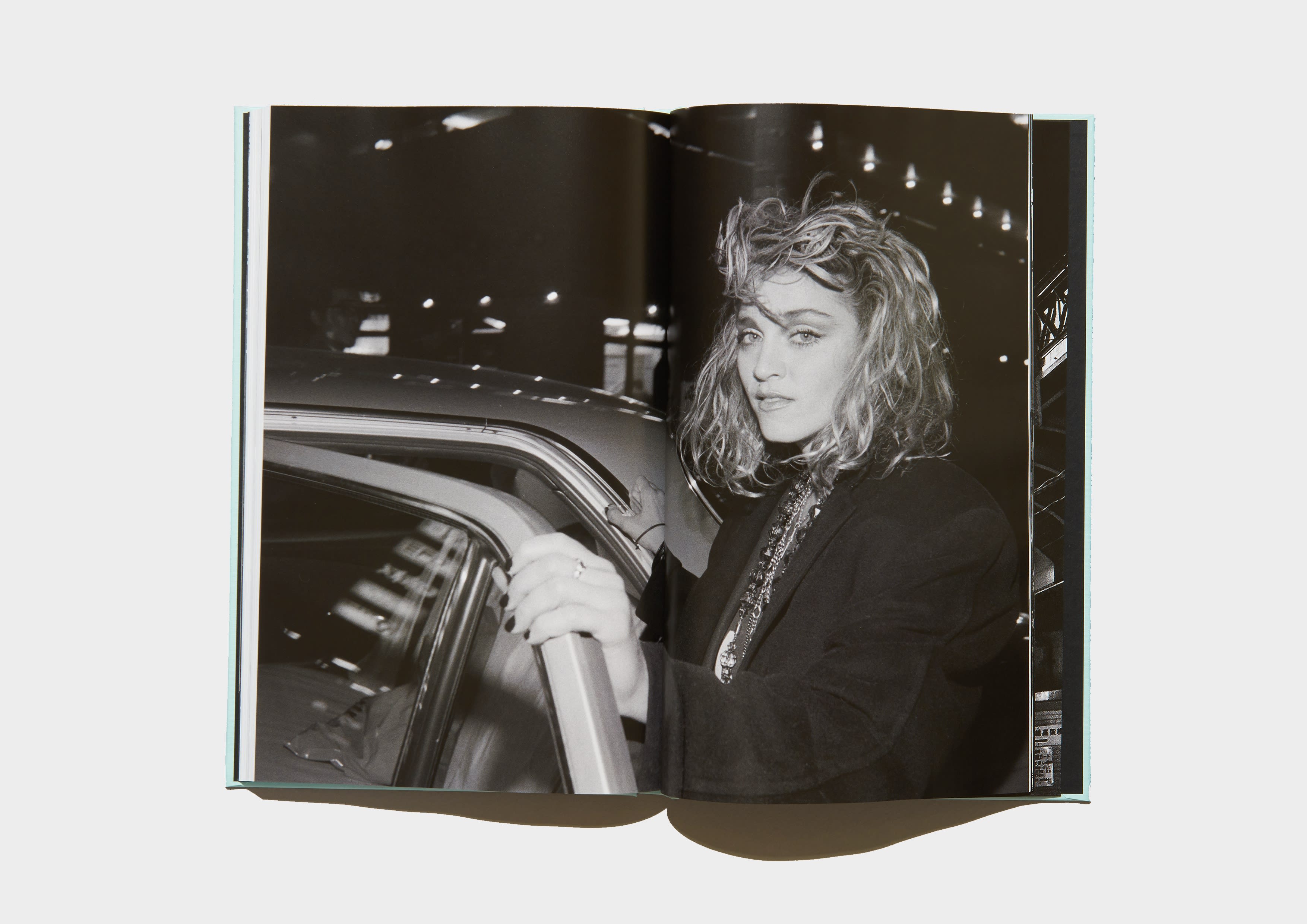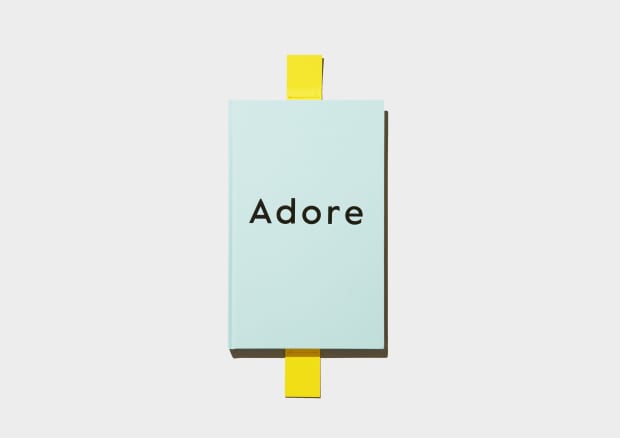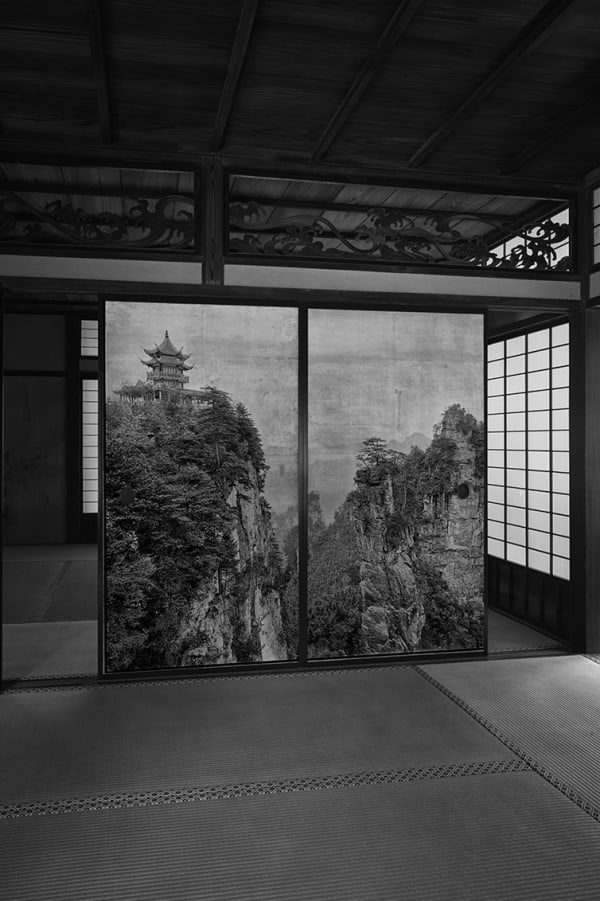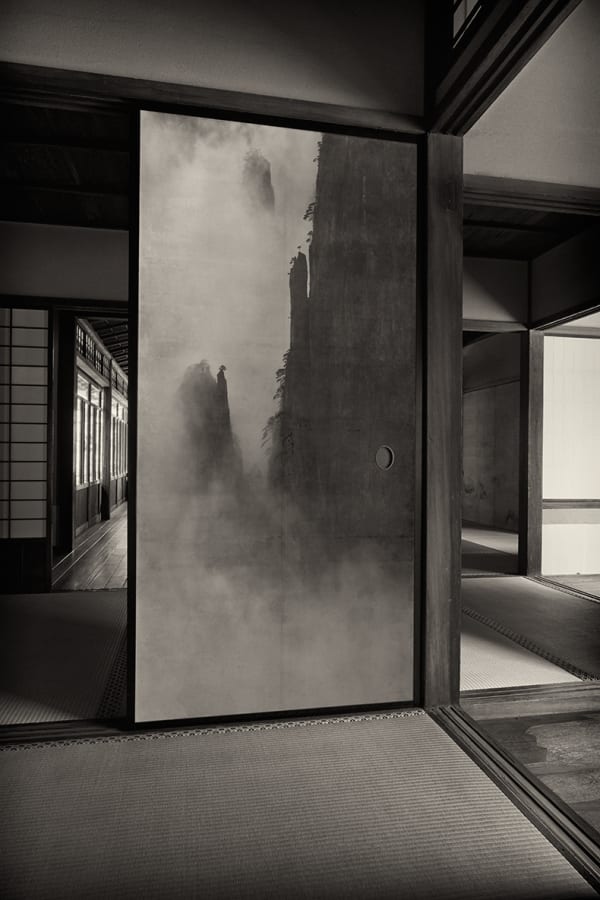-

-
It was January 1985, Tokyo – Madonna’s first visit to Japan to promote the ‘Like a Virgin’ album. Photographer Kenji Wakasugi was allotted 45 minutes for the photo session, commissioned by Playboy Weekly Excite.
In the studio there was one flash unit and one pink sofa, nothing else.
Loaded with a mesh of now iconic references from early Gaultier and Westwood, to the Healthy Swimmer T-shirt and Boy Toy belt-buckle, the Takara Kronoform robot watch, to Maripol’s layered rubber and crucifix jewellery – time has done nothing to diminish the potency of these photographs.
Here Madonna is sublime, singular.
-

-
Reclining on a pink sofa covered in plastic, dancing with abandon or captured off guard through a car window, it is Madonna’s beauty that transfixes and forms the connective tissue.
The opening and closing pages of ADORE offer a further insight into Kenji’s 80s nocturnal world.
A myriad of street neon’s and bustling commuters but amongst all the noise are Kenji’s beautifully serene interiors. These delicate Japanese motifs of flowers, birds, even an eclipse, punctuate the chaos. This paradoxical meeting of culture and nature is central to all Kenji’s subsequent work as a serious artist.
-
Published for the first time ADORE is the complete overview of the session – 200 pages include 324 frames, 10 contact sheets, together with 111 large format black and white portraits. For three and a half decades this collection remained private, near silent.
Furthermore, the design of this art-book pays homage to Japanese 80s minimalism. The aqua cover features only the title ADORE debossed in ebony lettering. Madonna’s name is foiled in Japanese text on the accompanying canary yellow and neon pink bellybands (hand sewn) – the idea being that the book itself becomes an object of beauty.
It is also worth noting that the entire first edition is bound in recycled paper made from coffee cup waste – taking some steps towards reducing environmental impact.
Designed and published by NJG
www.njgstudio.com
-

-
‘ADORE’ is a limited-edition publication of 800 books.
-

-

-

-

-
This work was inspired by Junichirō Tanizaki’s essay, ‘In Praise of Shadows’.
I have combined fusuma of old residences with landscape photographs, to create a new form of artistic expression.
Fusing two different contrary worlds, I have caused a chemical change that gives birth to a new world of fusuma pictures, one that surpasses time and space.
The architecture (built in the 17th century) found in this work are of the historic structures, Rinshunkaku and Gekkaden, preserved in Yokohama Sankeien Garden as Important Cultural Properties.
Kenji Wakasugi
-
























